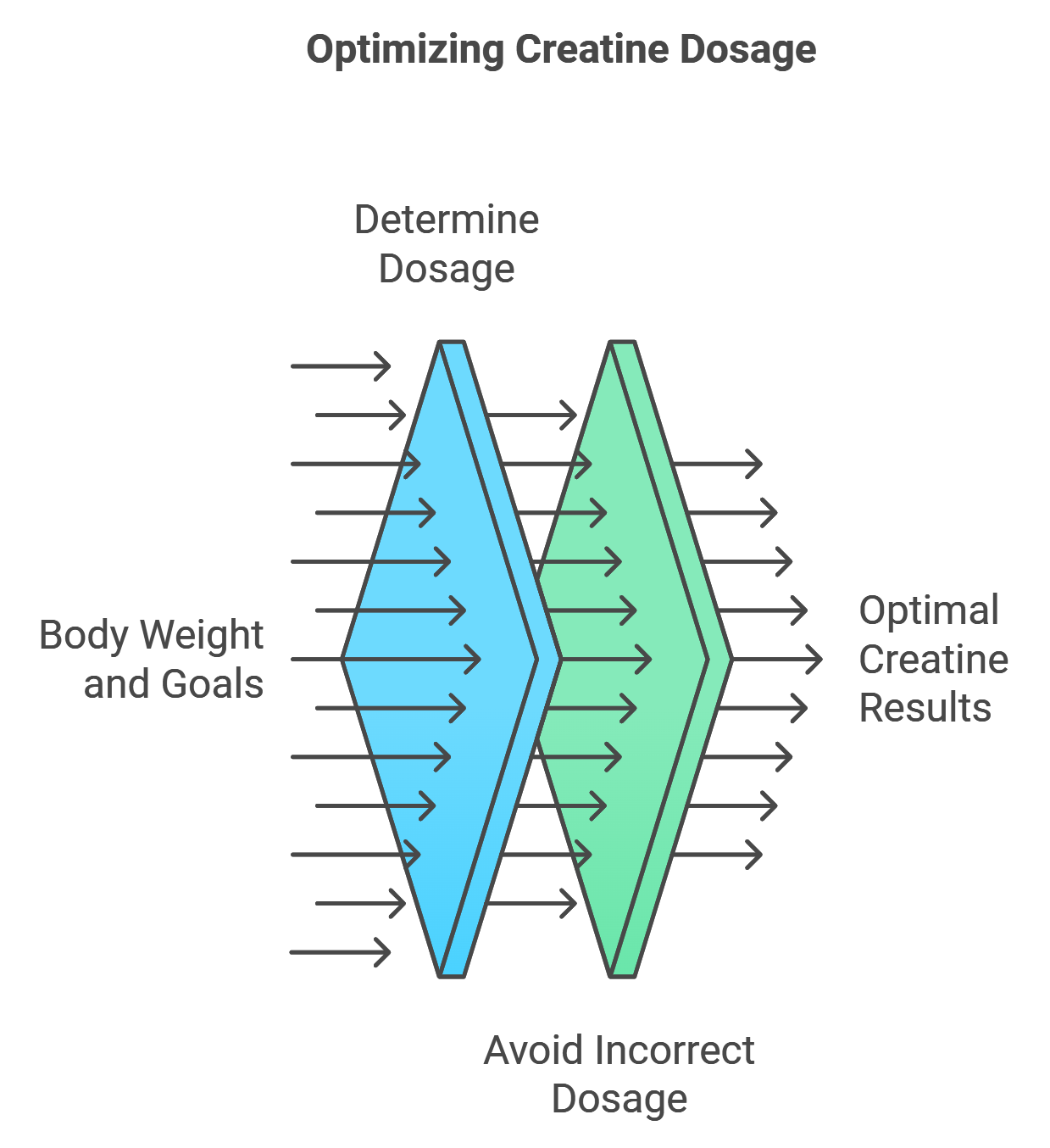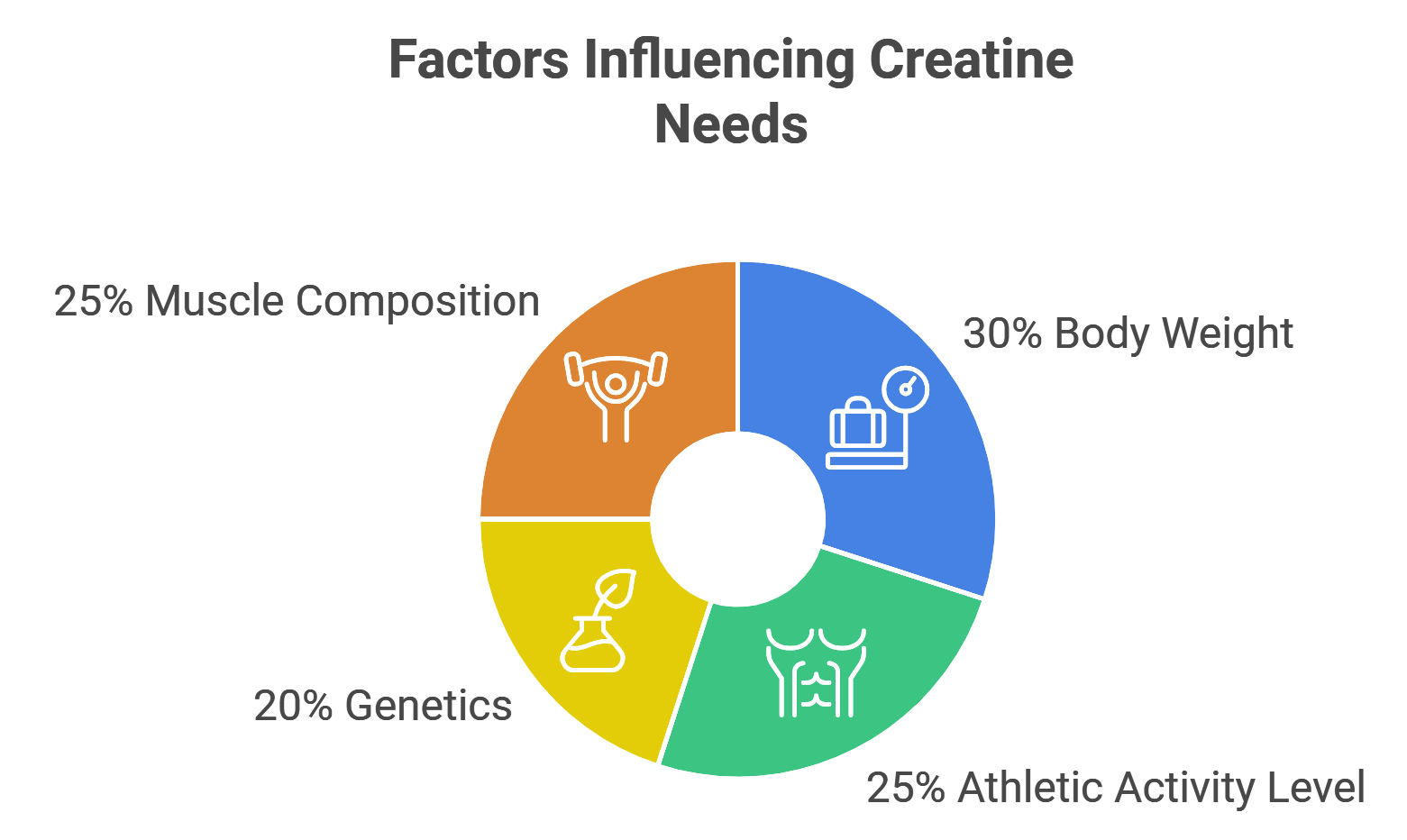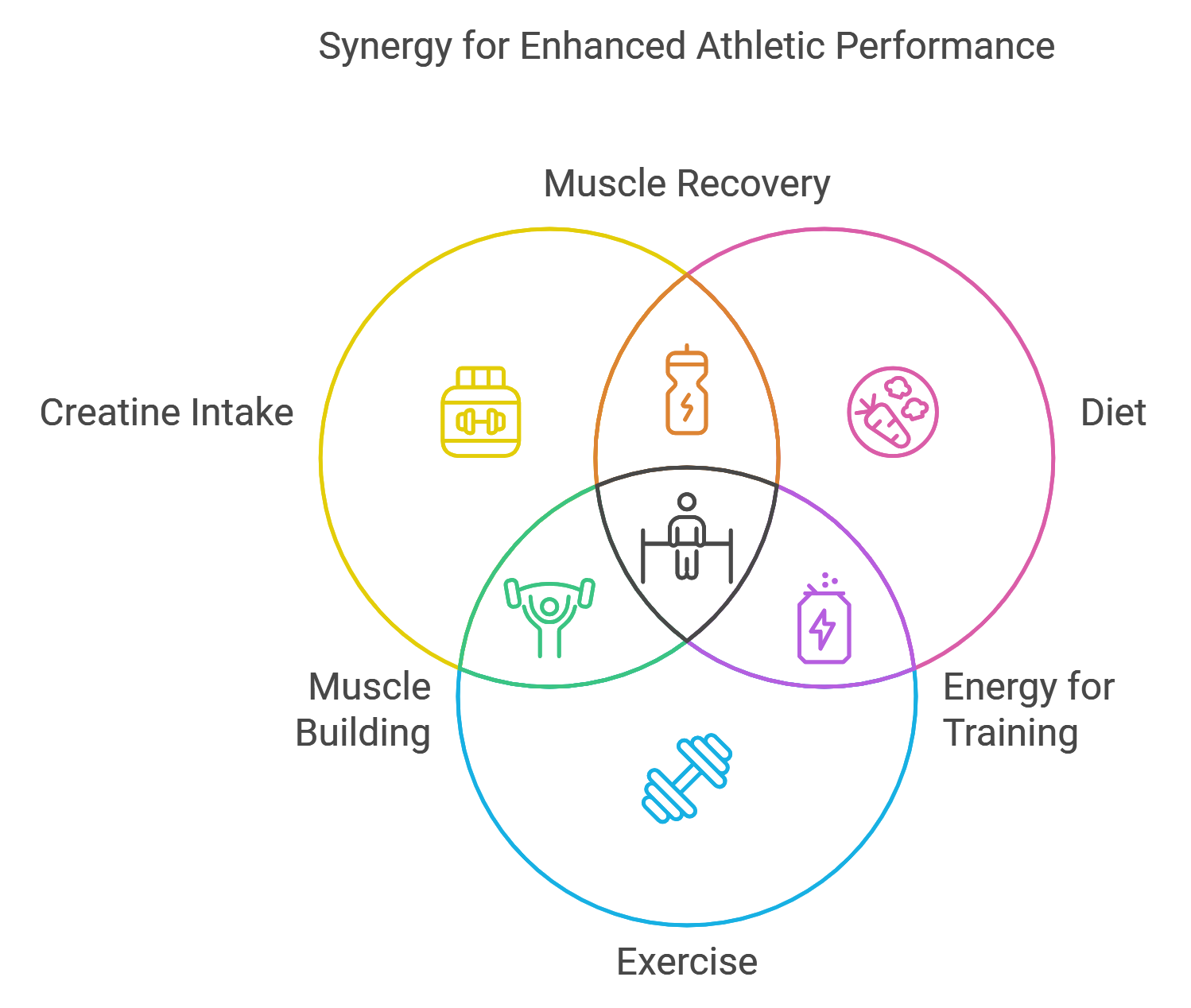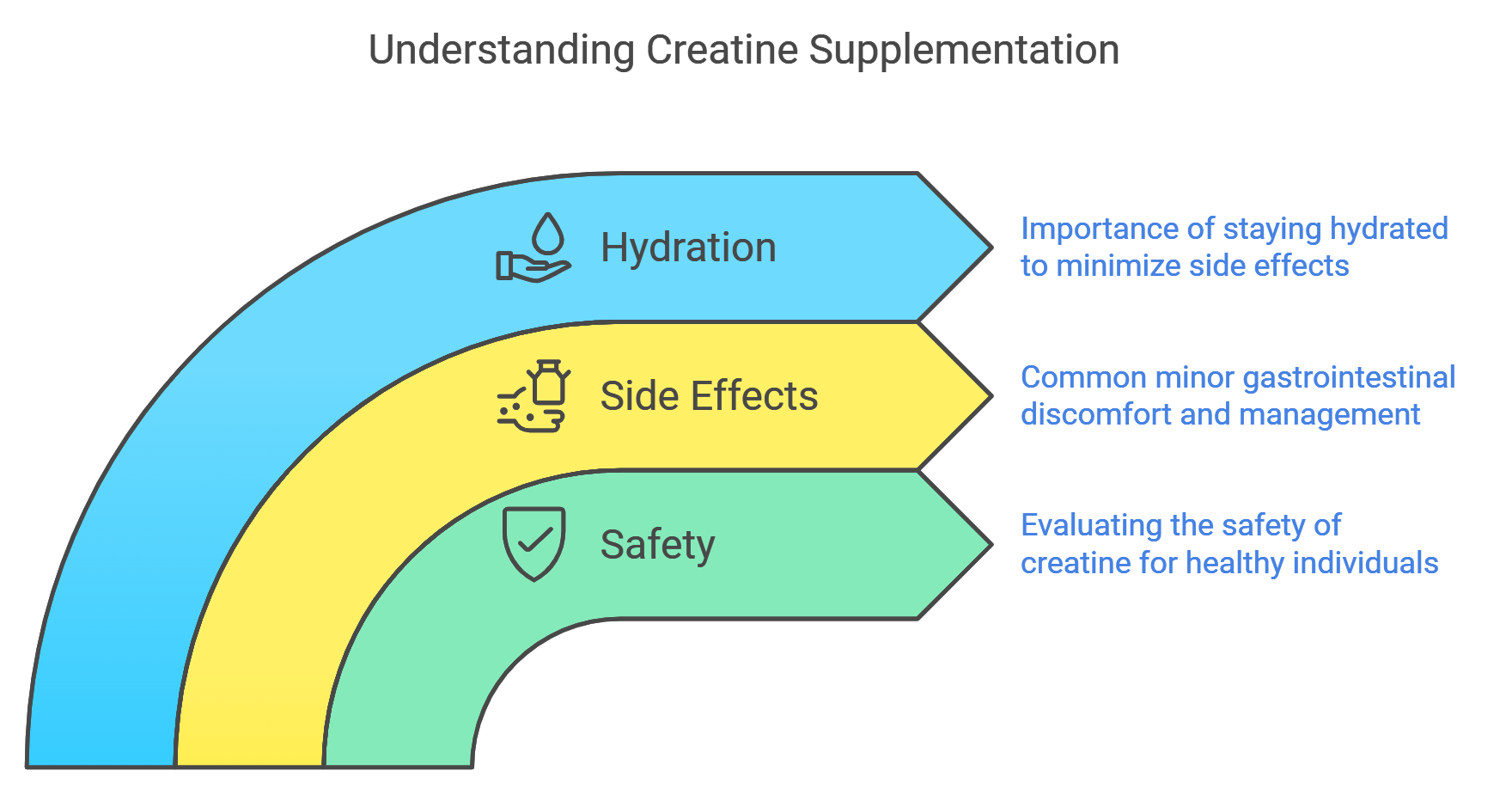Creatine is a popular supplement among athletes and fitness enthusiasts. It’s known for its ability to enhance muscle mass and strength.
But how much creatine should you take? The answer isn’t one-size-fits-all.
This is where a creatine intake calculator comes in handy. It helps determine the optimal dosage based on your individual needs.
In this guide, we’ll walk you through how to use a creatine intake calculator. We’ll cover everything from calculating your maintenance dose to understanding the loading phase.
We’ll also delve into the importance of grams of creatine per kilogram of body weight. By the end, you’ll be well-equipped to use creatine to its full potential.
So, whether you’re an athlete, bodybuilder, or just someone looking to increase muscle, this guide is for you. Let’s get started.
Understanding Creatine and Its Benefits
Creatine is a natural substance found in muscle cells. It’s often used to boost energy during high-intensity workouts.
When supplemented, creatine can help improve athletic performance and increase muscle mass. It is particularly beneficial for activities requiring quick bursts of energy.
What is Creatine?
Creatine is a compound produced by the body, mainly stored in muscles. It plays a crucial role in energy production.
Supplementing with creatine can increase its levels in muscles. This process allows you to sustain high-intensity exercise for longer periods.
The Role of Creatine in Muscle Strength and Mass
Creatine helps muscles recover quickly, leading to increased strength and growth. It enhances the muscle’s capacity to generate force.
By saturating your muscles with creatine, you’ll notice improvements in muscle power and size. This can enhance overall performance during strength training sessions.
The Importance of Proper Dosage
Calculating the right dosage of creatine is vital for achieving optimal results. The amount needed can vary depending on body weight and goals.
An incorrect dose may lead to subpar results or unpleasant side effects. Using a creatine intake calculator can help you determine the right amount for your body.

Why Dosage Matters
Proper dosage ensures your muscles are effectively saturated with creatine. Too little may not enhance performance, while too much could lead to discomfort.
Achieving the right creatine levels is crucial for muscle development and energy production. The correct dosage supports muscle recovery and strength gains.
Creatine Loading vs. Maintenance Phase
The creatine loading phase involves taking larger doses to rapidly saturate your muscles. This phase typically lasts 5-7 days.
After loading, the maintenance phase begins with a reduced dosage. Usually, 3-5 grams per day is sufficient to maintain elevated creatine levels in muscles.
Step-by-Step Guide to Using a Creatine Intake Calculator
Using a creatine intake calculator simplifies finding the optimal dosage for your needs. Start by gathering essential personal details, such as your body weight and fitness goals.
The calculator will provide tailored recommendations for both loading and maintenance phases. This ensures you achieve the desired creatine levels for your performance enhance journey.
Inputting Your Data
Begin by entering your body weight into the calculator. This forms the basis for determining the correct creatine dosage in grams per kilogram of body weight.
Next, specify your fitness objectives and current exercise regimen. The calculator uses this info to tailor recommendations that suit your specific needs and enhance muscle mass.
Interpreting the Results
The calculator will generate a creatine loading dose along with a maintenance dose. The loading dose is typically higher to quickly saturate your muscles.
Review the suggested dosages and make any necessary adjustments based on your personal experience. This approach helps ensure the dosage aligns with your body’s response and performance goals.
Adjusting Your Creatine Intake
Creatine needs can vary widely among individuals. Adjustments ensure you maintain optimal levels without overloading your system. Monitoring your body’s response is key to successful supplementation.
Adapting your intake can enhance muscle gains and athletic performance. Knowing when and how to adjust ensures efficiency and safety during your creatine journey.
Factors Affecting Creatine Needs
Several elements influence your creatine requirements. Body weight is crucial, with heavier individuals typically needing higher doses. Athletic activity level also plays a significant role.
Genetics and muscle composition can affect how your body processes creatine. Understanding these factors helps determine the most effective dosage for your situation.

When to Adjust Your Dosage
Adjust dosages based on your body’s response. If you experience bloating or digestive issues, consider a lower intake.
Performance plateaus may signal a need to modify your dosage. Regularly reviewing your progress and goals ensures your creatine intake remains aligned with your needs.
Hydration and Creatine Supplementation
Proper hydration is crucial when supplementing with creatine. Creatine draws water into muscle cells, potentially leading to dehydration if you’re not careful. Maintaining fluid balance is essential to avoid cramping or discomfort during workouts.
Staying hydrated enhances creatine’s effectiveness. Understanding hydration needs ensures that your body can efficiently use the increased creatine levels to boost performance.
The Importance of Water Intake
Drinking enough water supports muscle function when using creatine. As muscle cells absorb more water, your overall water requirement increases. Ensure you’re drinking throughout the day, not just around your workout.
Adequate water intake prevents potential side effects like muscle cramps and kidney strain. Staying mindful of your hydration status helps optimize the benefits of creatine supplementation.

Using a Creatine Water Intake Calculator
A creatine water intake calculator can be a helpful tool. It estimates the additional water you need based on your creatine dose and activity level. This personalized guidance helps you avoid dehydration.
Using the calculator regularly can help you track changes in your fluid needs. Staying informed about your hydration can positively impact your muscle gains and overall athletic performance.
Maximizing the Effects of Creatine
To fully benefit from creatine, combining it with the right diet and exercise routine is crucial. Creatine works best when paired with resistance training, which helps build muscle strength and mass. Consistent workouts and a balanced diet play a significant role in maximizing results.
Include adequate protein and carbohydrates in your meals. This support muscle recovery and provide the energy needed for effective training sessions. Creating a synergy between your creatine intake, diet, and exercise helps enhance overall athletic performance.

Diet and Exercise Considerations
Focus on incorporating a high-protein diet to support muscle growth. Lean meats, dairy, and legumes are excellent protein sources. Carbohydrates are also important, as they replenish energy levels post-exercise.
Regular strength training amplifies creatine’s effects. It encourages muscle adaptation and boosts muscle creatine storage. Tailoring your diet and fitness plan enhances creatine’s ability to improve muscle mass and strength.
Common Myths and Misconceptions
There are several misconceptions about creatine use. One common myth is that creatine alone builds muscle, but diet and exercise are just as crucial. Creatine supports training but doesn’t replace the need for consistent workouts.
Another misconception is that creatine causes dangerous side effects. However, when used correctly, creatine is safe for most people. Dispelling these myths helps users make informed decisions about their supplementation routine.
Safety and Side Effects
When considering creatine supplementation, understanding its safety is important. Creatine is widely studied and generally considered safe for healthy individuals. Nonetheless, like any supplement, it can have side effects in some users.
It’s common to experience minor gastrointestinal discomfort initially. This is usually manageable by adjusting the dosage and increasing water intake. Staying hydrated is vital to minimize any potential side effects.

Potential Side Effects and How to Mitigate Them
While creatine is safe for most, some may experience bloating or stomach upset. Begin with a lower dose to assess tolerance. Gradual dosage increases can help mitigate these side effects.
To reduce the risk of dehydration, maintain adequate hydration. Using a creatine water intake calculator ensures you meet your daily fluid needs. Proper hydration also supports optimal creatine function in muscle cells.
Consulting with a Healthcare Professional
Before starting creatine supplementation, consulting a healthcare professional is wise. This is especially true for people with pre-existing health conditions. A doctor can offer personalized advice based on your health profile.
Healthcare professionals can also help monitor any adverse reactions to creatine. Their guidance ensures that supplementation aligns with your fitness goals while maintaining safety. Seeking expert advice increases confidence in your supplementation plan.
Conclusion and Next Steps
Using a creatine intake calculator ensures you take the right dosage to maximize benefits. Maintaining proper hydration and considering professional advice enhance safety and effectiveness.
To get the best results from supplements, keep track of your progress. Make changes if needed to improve muscle growth and performance.

